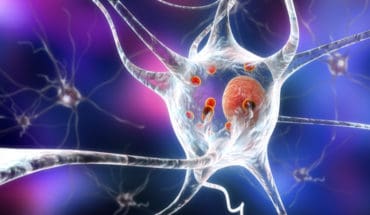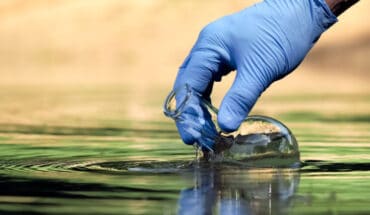Microplastics are not just tiny particles that can be ingested, they can also carry viruses, a University of Queensland study has revealed.
The study, led by Associate Prof Jianhua Guo and Dr Ji Lu from UQ’s Australian Centre for Water and Environmental Biotechnology (ACWEB), investigated if microplastics have the ability to harbour viruses, including the one found inside E. coli bacteria.
“We often hear about the human and environmental harm caused by microplastics in water, but there is little known about whether the tiny microplastic particles can carry viruses,” Dr Guo said.
“What we found is that viruses can hitchhike on microplastics and prolong their infectivity, which means there could be an increased risk of virus transmission throughout waterways and the environment.”
Dr Lu said they used the E. coli bacteriophage in the study, which is a virus that infects and replicates within the bacteria itself and is not harmful to humans.
“By testing polystyrene particles of varying sizes, we found that more than 98 per cent of the virus we used was found on the microplastic, and over half of the viruses could still be detected 10 days later – much longer than if the virus particles were free-floating in the water,” Dr Lu said.
The team also tested how sun exposure and the size of microplastics helped prolong the virus’s survival and found the more environmental damage on the microplastic, the more likely it was to carry viruses.
“The virus-carrying microplastics could be a big issue,” Dr Lu said.
“The required dosage to be infectious to humans varies between different types of viruses, but there could be instances where the dosage is enough on a microplastic to cause potential infection.
“Because microplastics can potentially accumulate deadly viruses and travel through waterways, it might be risky to eat seafoods harvested from areas where they are frequently contaminated by microplastics.”
Dr Lu said the study started when wastewater was being tested to detect COVID-19 cases in the community, which spurred the team’s investigation into what could mediate virus transmission in water environments.
“Our findings also indicated that microplastics could affect how viruses are distributed in water, which could be of interest in future studies,” Dr Lu said.
“Our findings have opened the door to further research that is needed in this area, including to test if other pathogens can hitchhike on more types of microplastics,” he said.
“The fact that viruses and microplastics can interact with each other could be problematic for human health, but more research needs to be conducted to investigate these impacts further.”
The study is published in Water Research.
ACWEB researchers Dr Zhigang Yu and Lyman Ngiam were also involved in the study, which was funded by the Australian Research Council Discovery Project, and the Advance Queensland Industry Research Fellowship.
- Gut microbiome could delay onset of type 1 diabetes - 3rd April 2025
- The da Vinci 5 Robot Is Set To Transform Bariatric Care: - 31st March 2025
- Beyond money: the hidden drivers fuelling child food insecurity - 31st March 2025






